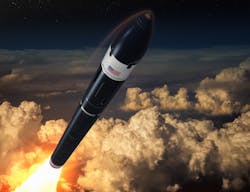NASA selects Phantom Space Corp. for commercial CubeSat launch
TUCSON, Ariz., - The National Aeronautics and Space Administration (NASA) needed a partner to launch small CubeSats into orbit. They found their solution from Phantom Space Corp. in Tucson, Ariz.
The CubeSats will be ferried into space by Phantom's two-stage Daytona rocket, which stands 18.7 meters tall (61 feet) and can transport satellites up to 450 kg (990 pounds) into low-earth orbit.
The Daytona is being designed, built, and tested at Phantom's base in Tucson. It is powered by ten Hadley engines supplied by Ursa Major of Colorado.
The rocket's first stage utilizes 9 Hadley engines to power the first part of the journey into space. Hadley is powered by liquid oxygen (LOX) and rocket propellant (RP-1).
Shortly after first stage separation, the second stage ignites to bring Daytona into orbit. The second stage uses a single vacuum-optimized Hadley engine, and contains the avionics and all necessary computing required to travel to, through, and back from space.
The Hadley engine, which is developed by Ursa Major, is a pump-fed, high-efficiency, 3D-printed rocket engine fueled by liquid oxygen (LOX) and rocket propellant (RP-1).
NASA's Venture-class Acquisition of Dedicated and Rideshare (VADR) missions intend to meet the agency's needs for NASA payloads while also fostering the development of new launch vehicles from both emerging and established launch providers. VADR increases access to space by significantly reducing costs using less NASA oversight to achieve lower launch costs with payloads that can accept a higher risk tolerance.
"The new contracts will help us launch a Golden Age of commercial space, and it's an honor to have NASA onboard—their leadership is invaluable to the space industry, and we are proud to help their programs expand humanity's knowledge of our planet, solar system, and beyond," says Mark Lester, Phantom Space COO and VADR Program Manager for the company.
